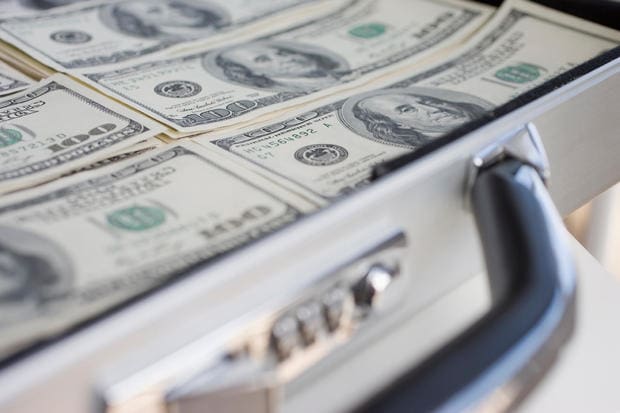It’s no secret that high-yield savings accounts currently offer impressive returns. After all, just about everyone has heard how the Federal Reserve’s aggressive rate hikes have driven deposit account interest rates upward.
But while a high-yield savings account can be a good financial tool, there are limits to the amount of money you should keep in your account. If you keep too much money in these accounts, you could miss out on the opportunity to increase your retirement savings, earn a larger return elsewhere or both. So, how much is too much money for a high-yield savings account?
How much is too much money for a high-yield savings account?
Ultimately, the maximum amount of money you should keep in a high-yield savings account is unique to you. After all, you have unique savings goals, risk tolerance and investing capabilities to consider.
That said, there are a few factors you should weigh when you decide how much money is too much for your high-yield savings account, including:
FDIC and NCUA insurance limits
Most high-yield savings accounts come with FDIC or NCUA insurance on deposits up to $250,000 per account, per depositor. This insurance protects your money if the financial institution you bank with goes out of business or otherwise can’t afford to let you withdraw your money.
So, regardless of any other factors, you generally shouldn’t keep more than $250,000 in any insured deposit account. After all, if you have money in the account that’s over this limit, it’s typically uninsured.
Your emergency fund
A high-yield savings account can be a great place to store your emergency savings. Most experts suggest that you should keep between three and six months’ worth of expenses in your emergency account at all times. So, if you have $4,000 per month in expenses, you should have between $12,000 and $24,000 in liquid savings at all times.
Any savings you have in excess of your emergency savings might be better served in other accounts, however. For example, you could consider investing in a certificate of deposit (CD), stocks, bonds, gold or other assets to diversify your holdings.
Your overall financial plan
It’s also important to consider your overall financial plan. For example, you may take a more aggressive growth approach with your personal financial plan. As such, you would probably focus more of your efforts on high-growth assets like stocks and real estate — leaving less money available for high-yield savings.
Of course, even as an investor with a healthy appetite for risk, you understand the need for an emergency fund. That said, having between three and six months’ worth of expenses in a high-yield savings account doesn’t fit into all plans. You may decide to only keep two months’ worth of expenses in your high-yield savings account instead in order to focus on growing your money.
The key point here is that every financial plan is unique. If you’re a risk-averse investor, you’ll likely store more money in a high-yield savings account than an investor with a more hefty appetite for risk.
Why a high-yield savings account is a smart option
High yields are the central draw to high-yield savings accounts, but they’re not the only reasons these accounts are a compelling place to store your money. Some other reasons to consider a high-yield savings account include:
- Safety: As noted, most high-yield savings accounts are either FDIC or NCUA insured for up to $250,000. Moreover, as deposit accounts, they’re not susceptible to the ebbs and flows of the market, so there’s little to no chance you’ll lose the money you deposit into one.
- Accessibility: There are usually no waiting periods to access the money you have in a high-yield savings account. In fact, you should be able to withdraw your money up to six times per month in most cases. However, you may be charged a penalty if you make withdrawals more often.
The bottom line
High-yield savings accounts are effective tools that can fit into most financial plans. These accounts offer safe and accessible homes for emergency savings — or any other savings you may need access to. However, if you can stand to wait a few days, months or even years to access your money, other savings vehicles may offer more advantageous ways to grow your nest egg.

